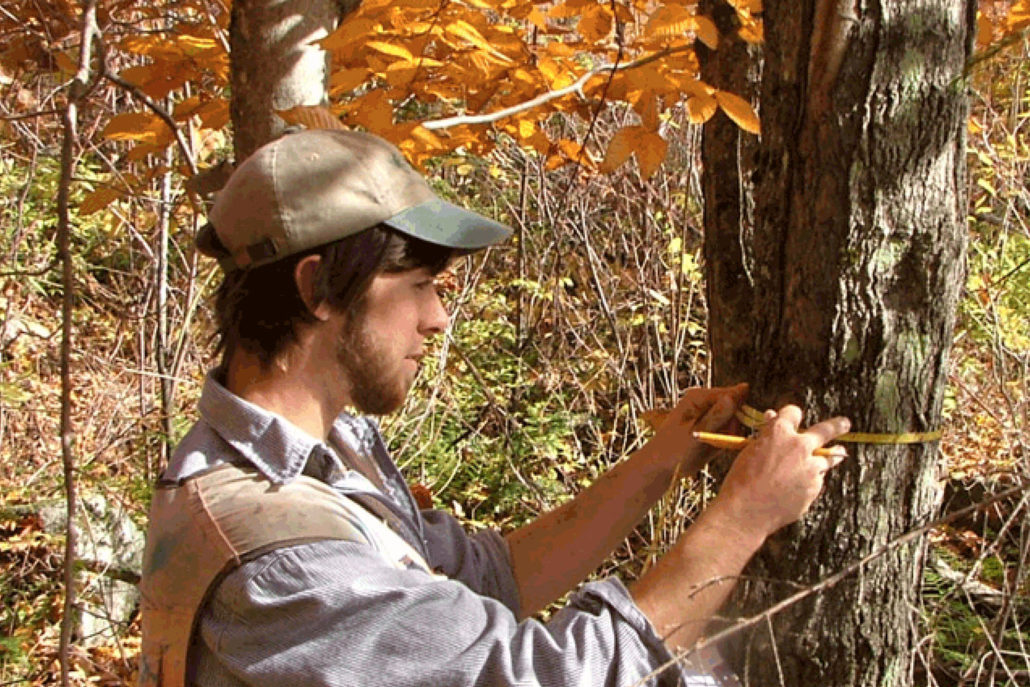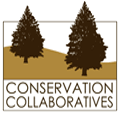Carbon
Forest-based carbon offsets projects provide payments to landowners for securing carbon dioxide by planting trees, using improved forest management techniques, and avoiding development. Carbon offsets, therefore, have the potential to offer a financially viable alternative to overharvesting and real-estate development. These payments can help to incentivize landowners to keep their forests intact and manage sustainably.
We investigated the use of carbon offsets to generate revenue to support long-term conservation. Although carbon offsets could provide an excellent funding source for forestland conservation, the current prices on the California and voluntary market are too low for most projects in New England to be economically viable. We look forward to the day that there is strong legislation that protects many services that forest provides.
Rehabilitation Forestry & Carbon Markets: A Case Study from Northeastern Vermont.
Project Partners:
- Laury Saligman, Conservation Collaboratives (Project Lead)
- William S. Keeton, Ph.D., University of Vermont
- Cecilia Danks, Ph.D., University of Vermont
- Ben Machin, M.S., Redstart Forestry
- John Gunn, Manomet Center for Conservation Sciences (advisor)
- Emily Russell-Roy, Pacific Forest Trust (advisor)
Funder: Conservation Innovation Grant. National Resources Conservation Service, USDA, through the State of Vermont
Clear Water Carbon Fund
The Fund was developed by Manomet Center for Conservation Sciences to connect individuals and businesses who value clean water, forested ecosystems, and climate neutrality to watershed groups, who plant trees in riparian buffer areas. Planting trees to restore riparian buffers has many environmental and social benefits: protecting clean water, creating wildlife habitat, enhancing local recreational opportunities, and in addition, each tree planted removes approximately 550 pounds of carbon dioxide (CO2) from the atmosphere over 40 years.
CWCF lessons learned document_final draft Oct 2015 (1)
Evaluating Supply and Demand of Northern Forest Branded Carbon Credits
Project Partners:
- William S. Keeton, Ph.D. (PI), University of Vermont
- Cecilia Danks, Ph.D. (Co-PI), University of Vermont
- Charles Kerchner, Ph.D. (Co-PI), University of Vermont
- Laury Saligman, M.S, Conservation Collaboratives
- Ben Machin, M.S., Redstart Forestry
Funder: The Northeastern States Research Cooperative
This multidisciplinary research project integrates methodologies from the natural and social sciences to inform landowners, forestry professional, and other decision-makers on both the supply and demand side issues related to forest-based carbon offsets generated in the Northeast. Laury Saligman of Conservation Collaboratives conducted the interviews and analysis for the demand-side portion of the project. Prior to this study, there had been no such research assessing interest in carbon offsets generated in the Northern Forest. This investigation addressed:
- Are universities and businesses in the Northern Forest area interested in purchasing locally generated forest based carbon offsets?
- What brand attributes are most attractive?
- How do they define “local” and how important is this factor in decision making?
- How are trade-offs between price, verification, and location assessed?
- Would these potential purchasers be willing to participate in an innovative local market that lacks some of the oversight of the international voluntary market to support local projects?
Northern Forest Carbon & Ecosystem Services Network (CESN)
Conservation Collaboratives worked with the Northern Forest Center to bring together the Northern Forest Carbon & Ecosystem Services Network (CESN), a diverse group of professionals from government, non-profits, and academia working to understand and enhance forest-based ecosystem services.
CESN wass a regional (four state) forum with the following goals.
- Exchange Information
- Influence Policy
- Develop Joint Projects (e.g. – marketing of high quality, regional projects; regional Revolving Loan Fund)

